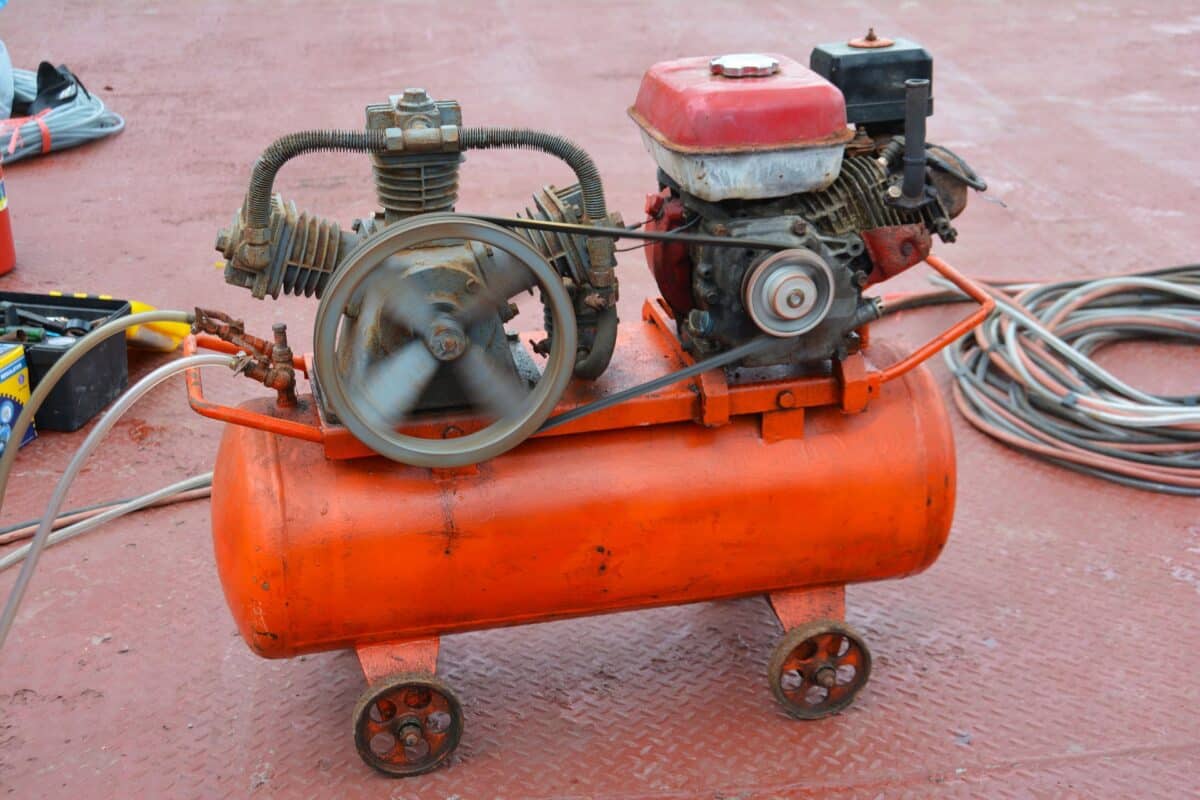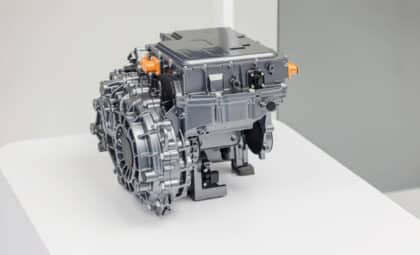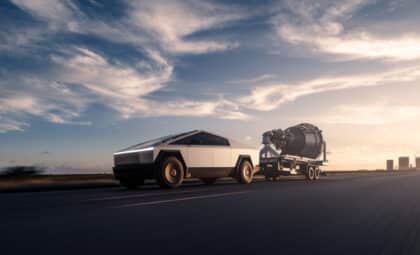
The conundrum is a common one: you save up the money for your first pneumatic (air powered) impact wrench.
But, before you buy that wrench, you have to find the right air compressor.
It’s easy to buy an air compressor that’s too large or too small. Those with plenty of shop space and cash enjoy splurging on larger, 60-gallon air compressors like these on Tool Tally’s list.
These industrial-sized compressors will be able to handle any task but may use more energy than is needed, making them more expensive to run. They also will likely require a separate circuit.
The rest of us working from our home garage are more conscientious of how much space we have. We are going to be looking for something affordable, small, and easily portable. In this category, it is possible to buy a compressor that is too small to power your tools.
A compressor that is too small will fail to run your tools or, if it does run them, it may force you to over-stress the compressor and burn it out.
What is an air compressor?
In the world of cordless impact wrenches, it might seem archaic to talk about air compressors. However, pneumatic offers unmatched, reliable power.
Unlike the electric motors that can get gummed up with the grease and the metal shavings of the mechanic’s shop, pneumatic tools are more resilient and less prone to wear.
Pneumatic tools also offer higher torque ratings than their electric counterparts. Impact wrenches with torque ratings over 1,000 foot-pounds are common. With air power, you spend less time arguing with bolts and more time getting your work done.
Air compressors consist of a small, motor-driven pump that collects the surrounding air and pumps it into a tank. A pressure switch monitors the pressure build-up in the tank and turns off the compressor when it reaches a target pressure.
This reserve of air is then available for your use.
Important specifications
Air compressors come in all shapes and sizes. They range from the tiny, 12-volt units that are part of emergency jumpstart packs and are used to air up your car tires, to large, rotary pumps that are used in industrial systems.
To separate the abilities of these different machines — and to help you get the right size for routine automotive maintenance — there are two significant specifications to pay attention to.
The first is PSI. PSI is Pounds-Per-Square-Inch and it is the force required to take action. Most tools require at least 90 PSI.
The second is SCFM or Standardized Cubic Feet Per Minute. This the volume of air that is flowing.
For tools like an air impact wrench where you are going to run it in short spurts, the SCFM is slightly less important, and the PSI is more important. It is generally easier to find a cheap air compressor to run air wrenches than it is to find one to run a paint sprayer.
However, for high-flow tools such as die grinders, sandblasters, and paint sprayers, you need more airflow (or SCFM) but at a lower pressure (PSI).
Horsepower is worth mentioning as well. As you shop, you will see a lot of tools sorted by horsepower. However, horsepower ratings only tell you how large the motor is that drives the compressor. Generally, it is better to focus on PSI and SCFM as your primary units of comparison as you shop.
What size air compressor do you need?
Now that we’ve covered the main definitions, the answer on correct air compressor size becomes very easy: check your tools for their specifications and find a compressor that matches that.
For impact wrenches or ratchets — the two tool types that you will likely be using the most — you will need a rating of about 90 PSI and 4 SCFM.
Pancake air compressors are one of the most popular models that are used by contractors for working on homes. However, nail guns only need about 2-3 SCFM and 90 PSI. These ratings make the pancake compressors just a hair too small to reliably use around the shop, especially if you are trying to rebuild an engine head.
For your home automotive shop, the best bet is to shop in the 20- to 30-gallon range. These tend to not only have the power you need but also the reserve air that allows you to do some of the higher-volume tasks like running a die-grinder or cut-off tool.
You could also use it for painting small projects like a quarter-panel or a new hood. (A 20-gallon tank will still be a little small to paint a full car without several hours of practice as you will need to frequently drain it to keep it from getting water in the system. These long waits make it harder to get a smooth finish. If painting is an important task to you, then it might be worth getting a 60-gallon tank.)
Is your circuitry strong enough?
One final point to consider is whether your shop’s wiring can support a compressor.
Most 60-gallon compressors need 220-volt wiring. Before you splurge on a big unit like that, you might want to call an electrician and see how much it will cost to run a new outlet for it.
Even 30-gallon compressors can draw 15-20 amps. Most circuits allow 20 amps or less, which means that if your compressor and your beer fridge are on the same circuit, you run the risk of tripping your circuit breaker.
Circuitry is not something that you can’t work around, but it is something of which to be aware. You might end up putting your compressor in the back corner of the shop so it can be on a separate circuit, and then running a little longer air hose.
This is a collaborative article.
The News Wheel is a digital auto magazine providing readers with a fresh perspective on the latest car news. We’re located in the heart of America (Dayton, Ohio) and our goal is to deliver an entertaining and informative perspective on what’s trending in the automotive world. See more articles from The News Wheel.










